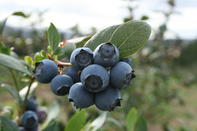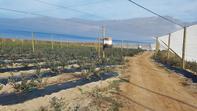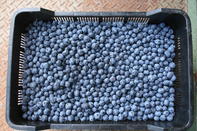Blueberries are native to Asia, Scandinavia and North America, with early native Americans already recognising the health and medicinal value of these berries.

International Production
Commercial production used to be restricted to the few regions where blueberries grew naturally because of the specific growth and climatic requirements of these berries.
Improved technologies, such as new varieties, climate control systems, shade nets and tunnels, have allowed production to spread to various other parts of the world, but the United States still accounts for more than half of the international production.
Most of this production comes from Washington, followed by Michigan, Georgia, Oregon and New Jersey.
Local Production of Blueberries
Blueberries could only be planted in high chilling areas, such as the Free State, until the arrival of low chilling varieties around 2010. Since then production has increased rapidly to cash in on the growing international and local demand for this super fruit. The industry is dominated by three large producers, namely Berryworld, Haygrove and United Exports.
Getting started is extremely expensive and it is hard to get hold of plant material if you are not connected with one of the big three producers. The return on investment, however, is good and there are talks of a new nursery entering the South African market, which will help to reduce the waiting period for plant material.
Blueberry Production Area

The Western Cape accounts for at least 60% of total production in South Africa, followed by Limpopo and the North West. Gauteng, the Eastern Cape, Free State and Mpumalanga also produce small volumes.
About 25% of production takes place in open fields, while 61% is produced under shade nets and 14% in tunnels. It is a high-value crop, so most of it is produced under protection to ensure high volumes of excellent quality fruit.
Blueberry Production Season

Blueberries take up to three years to produce fruit of export quality, with the harvest season traditionally running from September to mid-February.
The berries are still picked by hand, with pickers generally picking into punnets, in which the fruit will be sold, to prevent unnecessary handling later. The punnets are transported to the refrigeration facility and reduced to temperatures of around 2 degrees Celsius in as short as possible time to prevent the fruit from spoiling.
Varieties
A range of varieties are planted, with cultivar selection determining to a large extent the ripening period and in turn the ability to reach a target market frame, for example, when European supplies are low between September and November.
The main cultivars planted are Rabbiteye cultivars, Northern Highbush and Southern Highbush.
Sales

Uses of Blueberries
Blueberries have been labelled as an anti-oxidant superfood that is said to lower your risk of heart disease, cancer and act as an anti-inflammatory.
The berries can be enjoyed raw or processed into confectionery products, juice and dairy products. Even the leaves are said to have medicinal value.
By Glenneis KrielFor bulk or Blueberries export enquiries please use the enquiry link below.